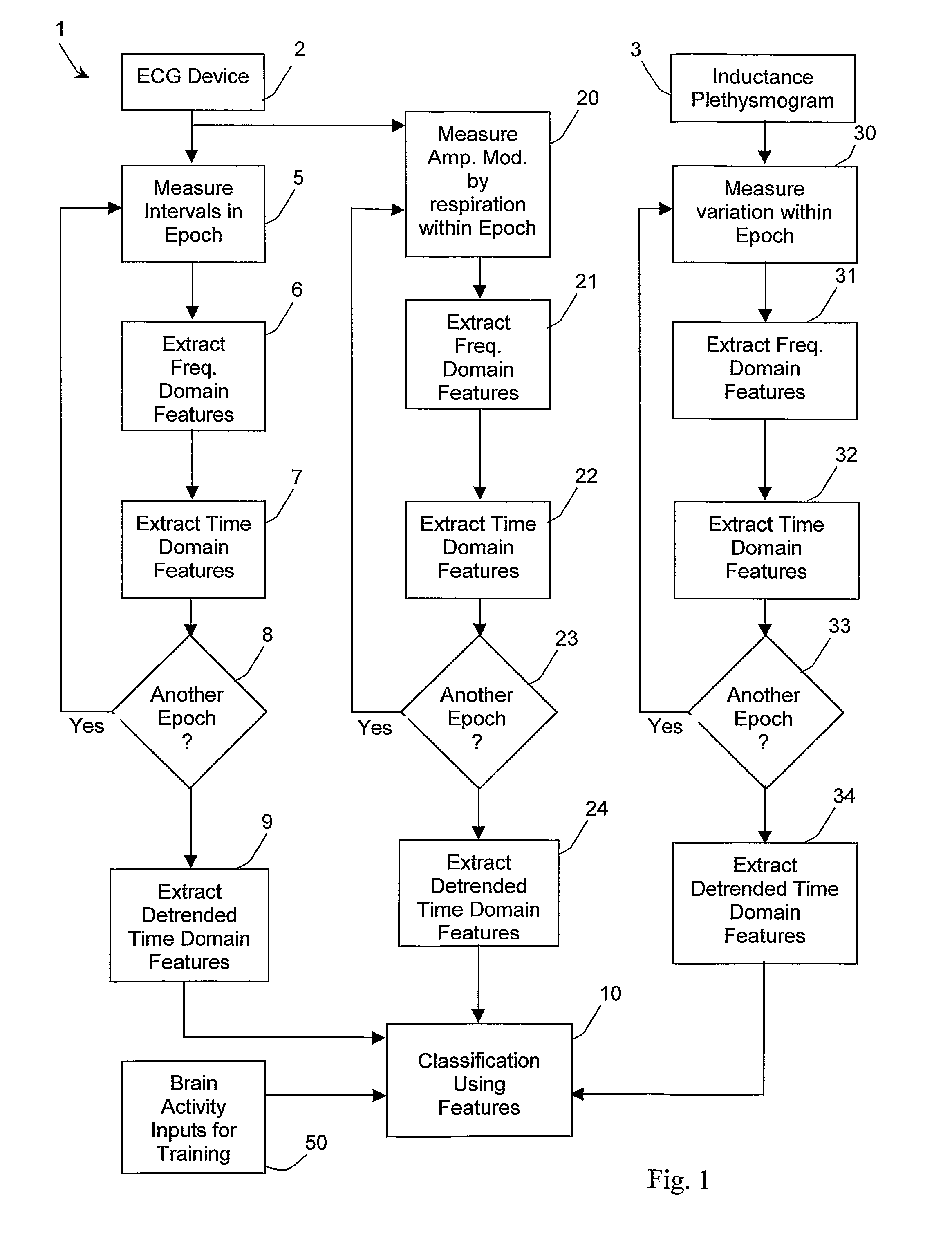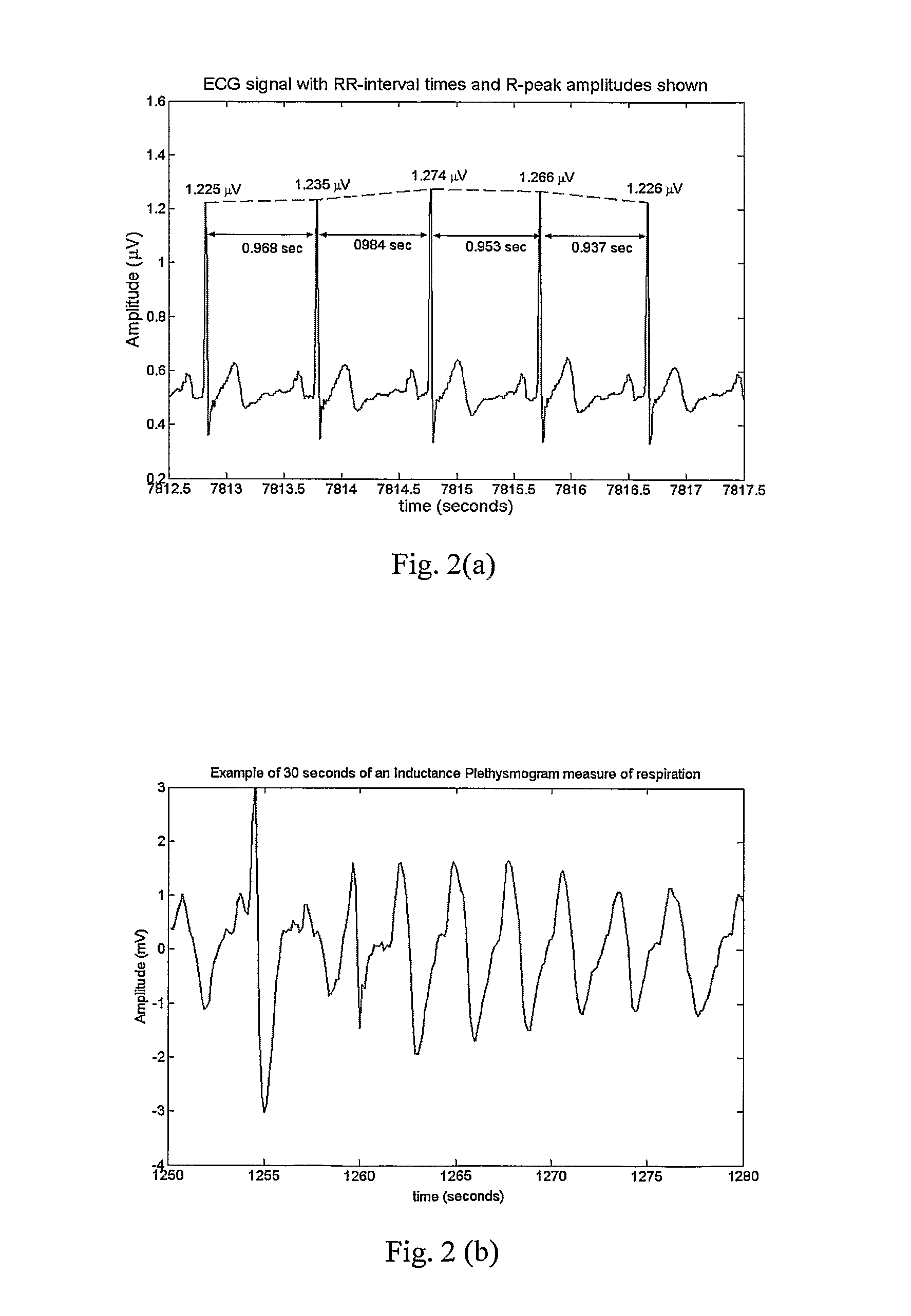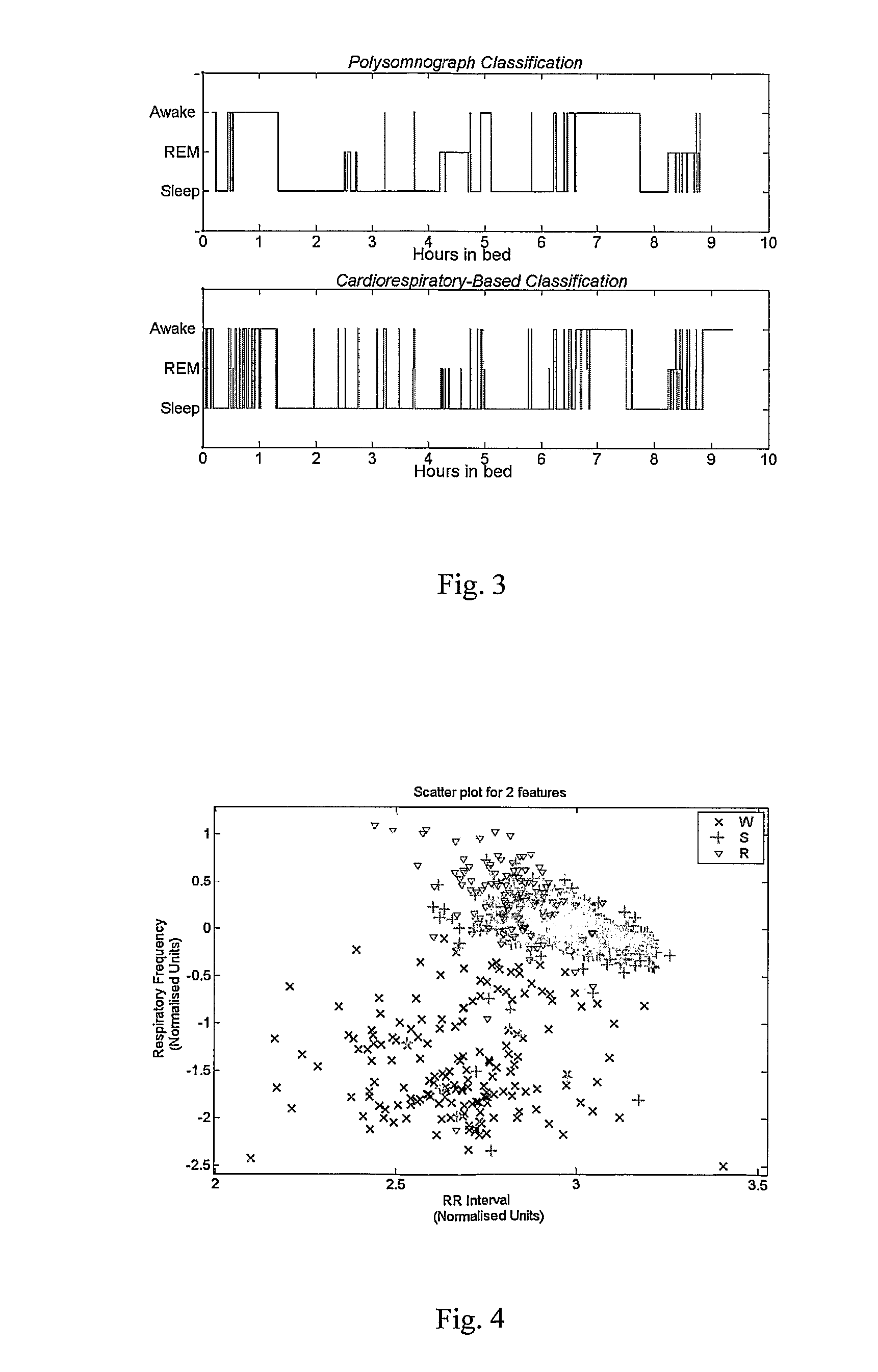Sleep monitoring system
a monitoring system and sleep technology, applied in the field of sleep monitoring system, can solve the problems of inability to accurately record extremely low voltage eeg signals, complex monitoring equipment of polysomnogram, and inability to monitor sleep patterns, etc., and achieve the effect of improving the performance of already-selected features
- Summary
- Abstract
- Description
- Claims
- Application Information
AI Technical Summary
Benefits of technology
Problems solved by technology
Method used
Image
Examples
examples
Feature Extraction
[0062]In an automated sleep staging system features are extracted from each 30 s. Sample data was collected from a database composed of overnight recordings from 37 subjects.
RR-Interval Series Features:
[0063]To calculate a power spectral density estimate, the data (RRnorm intervals falling within the epoch) from the epoch is zero-meaned, windowed (using a Hanning window), and the square of its Discrete Fourier Transform (DFT) is taken as a single periodogram estimate of the interval based power spectral density. The x-ordinate of this estimate is in cycles / interval, which can be converted to cycles / second by dividing by the mean RR for the epoch. From this spectral estimate, five features are calculated:[0064]the logarithm of the normalized LF (power in the 0.05-0.15 Hz band),[0065]the logarithm of the normalized HF (power in the 0.15-0.5 Hz band), where normalization is achieved by dividing by the total power in the VLF, LF, and HF bands (0.01-0.5 Hz),[0066]the LF...
PUM
 Login to View More
Login to View More Abstract
Description
Claims
Application Information
 Login to View More
Login to View More - R&D
- Intellectual Property
- Life Sciences
- Materials
- Tech Scout
- Unparalleled Data Quality
- Higher Quality Content
- 60% Fewer Hallucinations
Browse by: Latest US Patents, China's latest patents, Technical Efficacy Thesaurus, Application Domain, Technology Topic, Popular Technical Reports.
© 2025 PatSnap. All rights reserved.Legal|Privacy policy|Modern Slavery Act Transparency Statement|Sitemap|About US| Contact US: help@patsnap.com



